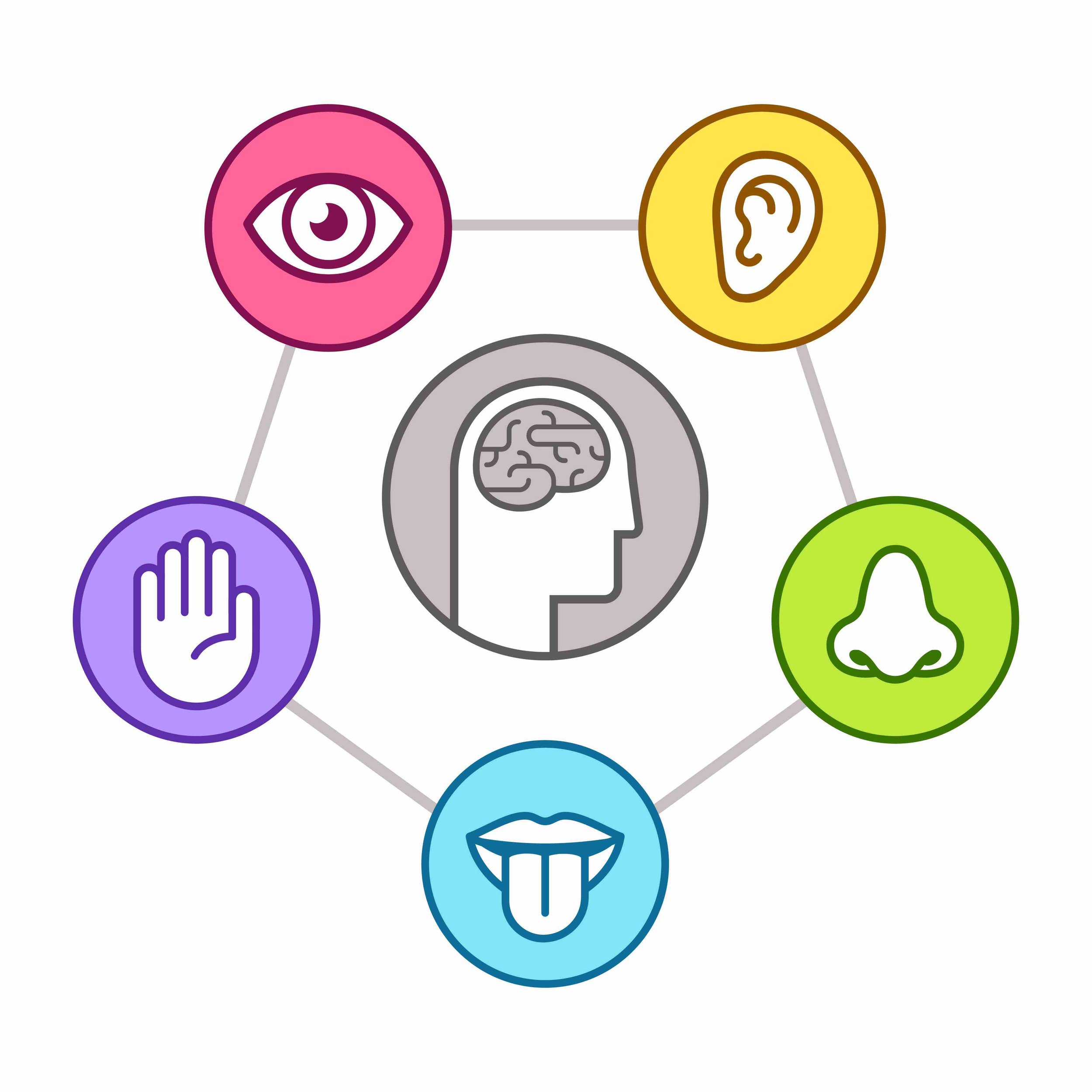Tips on How to Write Songs for Music Sync Licensing
April 5, 2023

We get asked a lot of questions about how to write songs for music sync licensing in TV and film.
A while back I wrote a post called 15 Easy Steps for Writing Songs for Sync, covering everything from writing a song every day to co-writing and listening to a lot of music.
In a more recent article called Writing Songs for Film and TV, I shared more songwriting tips including how to write songs with emotion and writing non-romantic songs with universal themes.
That said, being authentic when writing songs for sync or for a sync brief can be tricky and a lot different than writing songs for yourself or for your band or an artist.
When you write songs for music sync licensing they can often come across as contrived and not authentic enough.
Improving Your Odds of Sync Placement
There isn’t any reason why you can’t write authentic songs that convey a specific emotion but are so well crafted that they will also work for music sync licensing.
Your song doesn’t have to be a chart-topping hit to find music sync placement in TV and film. However, you should do whatever you can do to increase your odds of getting your music heard and placed.
Yes, music supervisors love to use hit songs by major artists, but those songs can be very expensive and most of the time are not accessible due to budget constraints. That opens a world of opportunity for indie artists and songwriters like you.
These songwriting tips will help you understand what to avoid and what to include to help make your songs more marketable to music supervisors, sync agents, and music libraries.
In this post, we’ll cover some tips on how to improve your odds of sync placement and how to write songs for music sync licensing so that they better meet the needs of what music supervisors are looking for:
- How to keep your songwriting authentic
- Why emotions are important in songwriting
- How to use the 5 senses to show instead of telling
- Why story songs don’t work for music sync licensing
- How to keep lyric themes universal
- Why each song section (verse, choruses, bridge) needs to be stand-alone
- Why you need to avoid changing the song’s Tempo, Groove & Key
HOW TO KEEP YOUR SONGWRITING AUTHENTIC

Always write from your heart and write what you are feeling. This authenticity will come through in your music and this is the first thing that most music supervisors look for.
They need to believe what you are singing about and more importantly; they need to believe that you feel what your song is about.
Professional songwriters, even if they are writing to a sync brief, always start with (and try to connect with) the emotion behind the song…and you should as well.
Every person is different with their own unique background and set of experiences…and only you can bring your experiences into your songwriting. That’s when your authenticity will shine through.
Why Emotions Are Important in Songwriting
Expressing what a character is feeling, going through, thinking about, or experiencing in a single moment is an essential skill not only for writers but also for songwriters.
This skill can help your listeners connect with your lyric on a deeper level and make your songwriting more engaging and immersive.
Here are some tips on how to write songs for music sync licensing that will help you express the emotion the character in your song is feeling, and what they are going through, thinking about, or experiencing in a single moment.
These tips include:
- Using sensory words and details
- Using body language
- Using internal monolog
- Using dialog
- Using metaphors and similes
- Using actions and reactions
Use Sensory Words & Details
Use words that appeal to the senses, such as smell, touch, taste, sight, and sound. These types of words help the reader experience what the singer is experiencing. For example, instead of saying “the air was hot,” describe how your clothes stick to your skin and the air feels heavy and suffocating.
Use Body Language
Describing the body such as posture, facial expressions, and movements can help the listener understand the emotional state of the singer or the person the singer is singing to. For example, if the person is feeling anxious, describe how they fidget, taps their foot, or wrings their hands.
Use Internal Monolog
Internal monologs are meant to be private, but they can be quite revealing. Verbalize your thoughts and feelings in your own words, and let the listener see the world through your eyes. Internal monolog can be used to reveal your motivations, fears, and desires, and to give insight into your emotional state.
Use Dialog
Dialog is another effective way to express what is being felt or experienced. Dialog can reveal the emotional state of both parties and help the song progress. Dialog can also be used to create tension and conflict between characters, which can help to deepen the listener’s connection to the story.
In her song You Should See Me In A Crown, Billie Eilish sings “You say ‘Come over baby, I think you’re pretty’” and then answers with “I’m okay, I’m not your baby.”
Use Metaphors & Similes
Metaphors and similes offer comparisons and create vivid images that help the listener understand the emotions involved. For example, you could describe how your heart is pounding like a jackhammer, etc. In her smash hit, Miley Cyrus sings, “I came in like a wrecking ball, I never hit so hard in love.”
Use Actions & Reactions
Actions speak louder than words, and in songwriting, so do reactions. Actions and reactions are excellent ways to express what is being felt or experienced.
Also, use verbs because they express action. Actions and behaviors help the listener understand the emotions involved. For example, if you are feeling angry, describe how you closed your eyes and swung! Use adverbs sparingly since they are more descriptive.
It might take a little practice to master this skill of conveying emotions, but keep in mind, the purpose of writing songs for music licensing is to enhance the emotion or mood of the scene your song is being synced with.
Your song needs to clearly convey what someone is thinking, experiencing, and living through at that specific moment in time.
For more on this topic, Robin Frederick has a great article on Adding Emotion to Your Lyrics.
How To Use The 5 Senses to Show Instead of Telling

Telling is lifeless and boring.
Use your 5 senses in your songwriting including seeing, hearing, touching, tasting, and smelling (sight, sound, feel, taste, smell). These senses show the listener what is behind the emotion of the song and mastering their use is an essential skill that all songwriters should develop.
However, you must avoid describing detailed images of the setting or location where the song is taking place. Remember, you don’t want to describe anything that might conflict with the images on the screen.
When your write songs for music sync licensing, don’t mention any names or specific places that are “too on the nose” as they say and will distract the viewer from what is being portrayed in the TV or film project.
Many of the same tips we offered above on how to express emotion in your songwriting can also be applied to using the 5 senses in your songwriting. These include:
- Using Dialog
- Using Action
- Using Metaphors & Similes
- Using Imagery & Descriptive Language
Here’s a great article about how writers Use the 5 Senses in Writing.
Why Story Songs Don’t Work for Music Sync Licensing
There are a lot of hit songs with stories…just look at today’s top country hits. However, when you write songs for music sync licensing, the sole purpose of the song is to enhance the mood and convey the emotion at that moment.
Unfortunately, story songs just won’t work because you can’t have two different stories at the same time. The story in your song will take the viewer away from the story that is on the TV or film screen and that can’t happen.
Writing conversational lyrics without a story can be challenging for some people, but it is a skill that can be mastered.
The key to writing conversational lyrics that have one consistent emotion throughout the song is to focus on the natural flow of language and how people communicate with one another.
Here are some tips on how to avoid storytelling and keep it conversational when writing songs for music sync licensing so that your lyrics connect with the listeners and convey the emotions and message of the song.
These tips include:
- Focusing on the emotions
- Using simple language
- Being conversational
- Using repetition
- Using metaphors and similes
- Being personal
- Editing, rewriting, and refining your lyrics
- Replacing story development with character development
Focus on the Emotions
Yes, you’ve heard this one before. When writing conversational lyrics, it is important to focus on the emotions of central character or singer. The lyrics should convey the feelings in a way that the listener can relate to.
Use Simple Language
One of the keys to writing conversational lyrics is to use simple language that the listener can understand. Be specific. Use one or two-syllable words that are simple, direct, and emotionally charged to help the listener connect with the message.
Commonly used words found in everyday conversations help make the lyrics more accessible. Avoid using overly complex words or concepts with a lot of syllables or phrases that can make the lyrics difficult to follow.

Be Conversational
The best way to write conversational lyrics is to write them as if you were having a conversation with someone. This means that you can use contractions, colloquialisms (idioms), and slang to make the lyrics sound more natural. This will help the listener feel as if they are a part of the conversation.
Use Repetition
Repetition is a powerful tool in conversational lyrics. Use repeated phrases or refrains to emphasize the emotions or message of the song. This will help the listener remember the lyrics and connect with the message.
Use Metaphors & Similes
We talked about this topic earlier in the section on how to convey emotions in a song. Metaphors and similes can be used to convey complex emotions in a single moment without the need for storytelling. They help the listener understand the emotions of the character in a more accessible way since they are easy to understand and are relatable.
Be Personal
When writing conversational lyrics, it is important to be personal. Write from your own experiences and emotions to make the lyrics more relatable to the listener. Try using “I” statements and writing in the first person to make the lyrics more personal and authentic.
Edit, Rewrite, Refine
Writing conversational lyrics is a process that requires editing and refinement. After writing the initial draft, go back and read through (don’t sing) the lyrics to make sure they are clear and concise. Refine the lyrics until they flow naturally and convey the emotions and message of the song.
Replace Story Development with Character Development
Character development can be an integral part of your song, and you can show this by describing how their actions and behaviors are evolving. Instead of telling the listener that a character is changing or has changed, show them by describing how they act differently. Use their actions to reveal their growth and development over the course of the song.
How To Keep Lyric Themes Universal

Writing a universal lyric that would appeal to almost everyone is a challenging but rewarding task. Universal lyrics can connect with people from all walks of life, regardless of their age, gender, or cultural background.
The key to writing a universal lyric is to tell your story in a way that will help millions of listeners relate it to their story.
Sounds simple, yes? See what Marty Dodson had to say about it in his American Songwriter article, Between the Rhymes: Writing Universal Songs.
There are some things you can do in your writing to make it easier. There are also some common traits of universal themes in songwriting:
- Using simple, relatable language
- Drawing from common experiences
- By staying authentic
- By avoiding cultural references
- Using metaphors and imagery
- Keeping it positive
- By making it catchy and memorable
Use these tips to create a powerful and memorable lyric that tells your story but resonates with a wider audience.
Remember, the key to writing a universal lyric is to connect with people on an emotional level and to create a sense of shared experience that transcends cultural and social boundaries.
Here are some tips to help you write a universal lyric that resonates with listeners:
Use Simple, Relatable Language
Using simple, everyday language that people can easily understand is key to writing a universal lyric. Avoid using obscure words or references that may alienate your listeners. Instead, focus on using words and phrases that are relatable to everyone, regardless of their background or education level.
Draw From Common Experiences
People may have different experiences, but certain experiences are universal. Try to tap into these common experiences and emotions that everyone can relate to, such as love, loss, joy, and heartbreak. This will help to create an emotional connection with your audience.

Stay Authentic
Again, authenticity is essential when it comes to writing universal lyrics. Write from your own experiences and emotions and avoid trying to imitate someone else’s style or voice. This will help to create a genuine connection with your listeners.
Avoid Cultural References
While cultural references can be powerful, they can also limit the universal appeal of your lyrics. Instead, focus on themes and emotions that are universal and can transcend cultural boundaries.
Use Metaphors & Imagery
Metaphors and imagery can help to create powerful and vivid images that connect with your listeners. Use comparisons and visual descriptions to help your listeners connect with the shared emotions and experiences you are describing.
Keep It Positive
While it’s important to be authentic and express a range of emotions in your lyrics, keeping a positive tone can help to make your lyrics more universal. Focus on hope, love, and inspiration, rather than negative emotions like hate or anger.
Make It Catchy
While a universal lyric should be authentic and meaningful, it also needs to be catchy and memorable. Use repetition and simple melodies that people can easily sing along to. This will help to create a sense of unity and shared experience among your listeners.
Test It Out
Once you’ve written your universal lyric, test it out on a diverse group of people. Get feedback on how the lyrics resonate with different listeners and adjust the lyrics accordingly. Vetting will help to ensure that your lyrics are truly universal and can connect with people from all walks of life.
Why Each Song Section Needs to Stand-Alone
Writing a great song is a skill that requires a combination of creativity and structure.
One important aspect of how to write a song for music sync placement is ensuring that each section of the song can stand on its own, while also leading the listener seamlessly from one section to the next.
Here are some tips to help ensure that the verses lead to the chorus and that each section of the song is strong enough to stand on its own:
- Song structure
- Melody and lyrics
- Verses that lead to the chorus
- Transitioning between sections
- Having a strong chorus hook
Whether you are a seasoned songwriter or a beginner, these tips can help you create songs that flow seamlessly and connect with your listeners. So, the next time you sit down to write a song, keep these tips in mind and let your creativity and imagination take over.
Song Structure
Firstly, it is essential to understand the basic structure of a song. Most songs are composed of several sections, including:
- Intro
- Verse
- Pre-chorus
- Chorus
- Bridge
- Outro
The verse is the section of the song that sets up the story or emotion, while the chorus is the part of the song that features the main hook or melody. Not always, but more often than not, the chorus is the part of the song that will get synced the most.
The pre-chorus is a section that builds tension and anticipation into the chorus, while the bridge section offers a change of pace or perspective (usually with the introduction of new chords, lyrics, and/or melody).
The intro and outro serve as bookends for the song and tend to include memorable musical or vocal elements (especially if they are from the song’s main hook or melodic theme) to introduce or conclude the song.
When you write a song for music sync licensing, keep in mind that in most cases the song will not be played in its entirety, unless the song is being used in a montage or for the opening or closing credits.

In general, the music editor on the TV or film project will only use specific sections of the song and not necessarily in chronological order. So that means every section needs to be able to stand on its own.
It’s also wise to have edit points in between each section so that the editor will have an easier time editing the sections they need.
For more info on this topic see Parts of a Song – Explained by ChordChord.
Melody & Lyrics
To ensure that each section of the song is strong enough to stand on its own, it is important to craft a compelling and memorable melody and lyrics for each section.
The melody should be catchy, memorable, and easy to sing along to, while the lyrics should be engaging, easy to understand and communicate a clear message or emotion. Each section of the song should feel distinct and unique, with its own melody, lyrics, and mood.
Verses Should Lead to the Chorus
While each section of the song should be able to stand on its own, it is also important to ensure that the verses lead to the chorus. This can be achieved by creating a sense of tension and release in the song. To help build this tension and lead into the chorus, many songs will include a pre-chorus specifically for that purpose.
The verses help build tension and anticipation, leading the listener to the chorus, which should provide a release of that tension. This can be achieved in the chorus through changes in melody, dynamics, or lyrics, and can help to create a sense of movement and progression throughout the song.
Transition Between Sections
Another way to ensure that the sections of the song flow seamlessly is to pay attention to the transitions between sections. These transitions should feel smooth and natural, with no jarring breaks or changes in mood or tempo.
You can achieve this by using transitional elements such as instrumental or vocal breaks, transitions in melody or rhythm, or other musical or vocal elements that bridge the gap between sections.
Strong Chorus Hook
A great way to ensure that the verses lead to the chorus is to create a strong hook for the chorus. The chorus should feature a memorable melody and hook that sticks in the listener’s mind.
This hook can be introduced or foreshadowed in the verses, building anticipation for its arrival in the chorus. By creating a sense of anticipation and payoff, you can ensure that the chorus feels like a natural and satisfying culmination of the song.
Why You Need to Avoid Changing the Song’s Tempo, Groove & Key
In songs meant for streaming or radio play, tempo, groove, and key changes are important tools for songwriters, but they can be detrimental when you write songs for music sync licensing in TV and film.
These types of changes can add excitement, emotion, and variation to a song, making it more interesting and engaging for streaming and radio listeners. However, in TV and film, songs are chosen for sync placement because they help convey the emotion of the scene they are synced to.
And in most cases, that emotion can be repeated as the TV or film progresses, which means the editor may reuse parts of your song for different scenes throughout the project. Changes in the key, feel, or tempo of the song makes it difficult for music editors to use different parts of your song.
The Music Studio has a wonderful article on How Chords & Key Impact Emotion in Music.
Summary
When you write songs for music sync licensing it is different than writing songs for yourself, your band, or an artist but you still need to be authentic and write to the emotion you are wanting to convey.
There are shortcuts you can take to help you convey the emotions and what the singer is going through, thinking about, and feeling in a single moment. Keep the lyrics simple, personal, conversational, and universal. Use the 5 senses to show instead of telling and avoid changing the tempo, key, and groove (or feel) of the song.
These techniques will help make your lyrics and your songs more suitable for sync licensing and are just some of the things music supervisors are always looking for.
About Sync Songwriter
JUNO award-winning music producer Chris SD created Sync Songwriter to help indie songwriters and artists earn income from their music through TV and film sync licensing.
As a songwriter or artist, you not only learn how sync licensing works but also how to write songs for music sync licensing that music supervisors will love. This will improve your odds of getting sync placement in TV and film.
From songwriting and song production to meeting and developing relationships with music supervisors and finding music licensing opportunities, these topics and more are covered in the Sync Songwriter course.
The goal is to get our Sync Songwriter students into the top 1% of artists and musicians that music supervisors are willing to hear music from.
There are sync opportunities in TV and film for all types and genres of songs but there is a lot that you can do to increase your chances of getting your music heard and synced much faster. Let us show you how.
To learn more, please contact us.
Leave a Reply
Hey! Give us a shout about anything really.
contact Sync Songwriter
Our goal is for you to start getting your music into TV & film.
This was very insightful. As a songwriter/ producer it comes off very logical. You helped me to understand what want in simple terms and I appreciate that. Thank you.
I appreciate your blog. I felt like “wow”, that’s how i was able to re-write my songs and get semi awards. Thank you.
Ja’Leah
Great to hear, Ja’Leah!